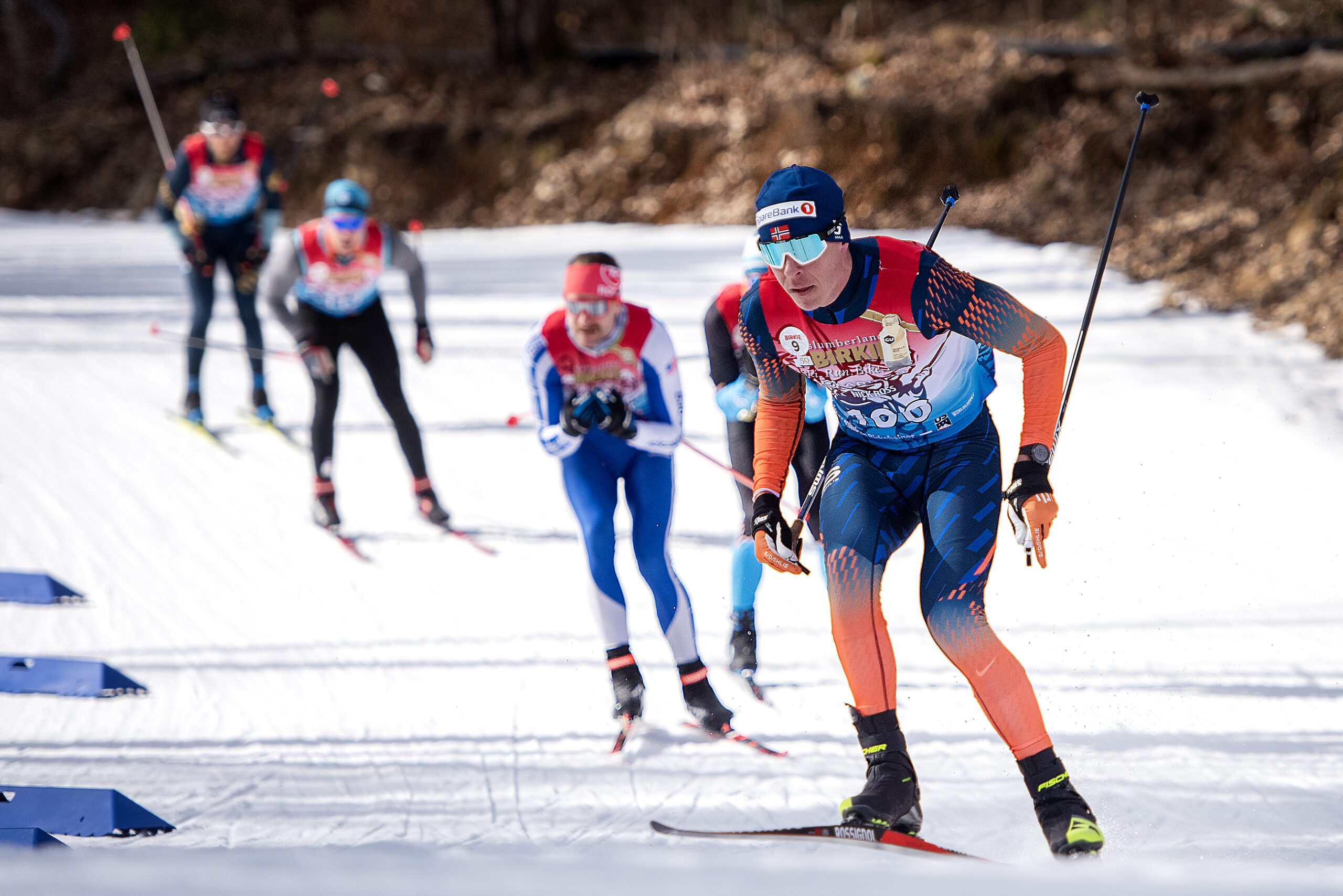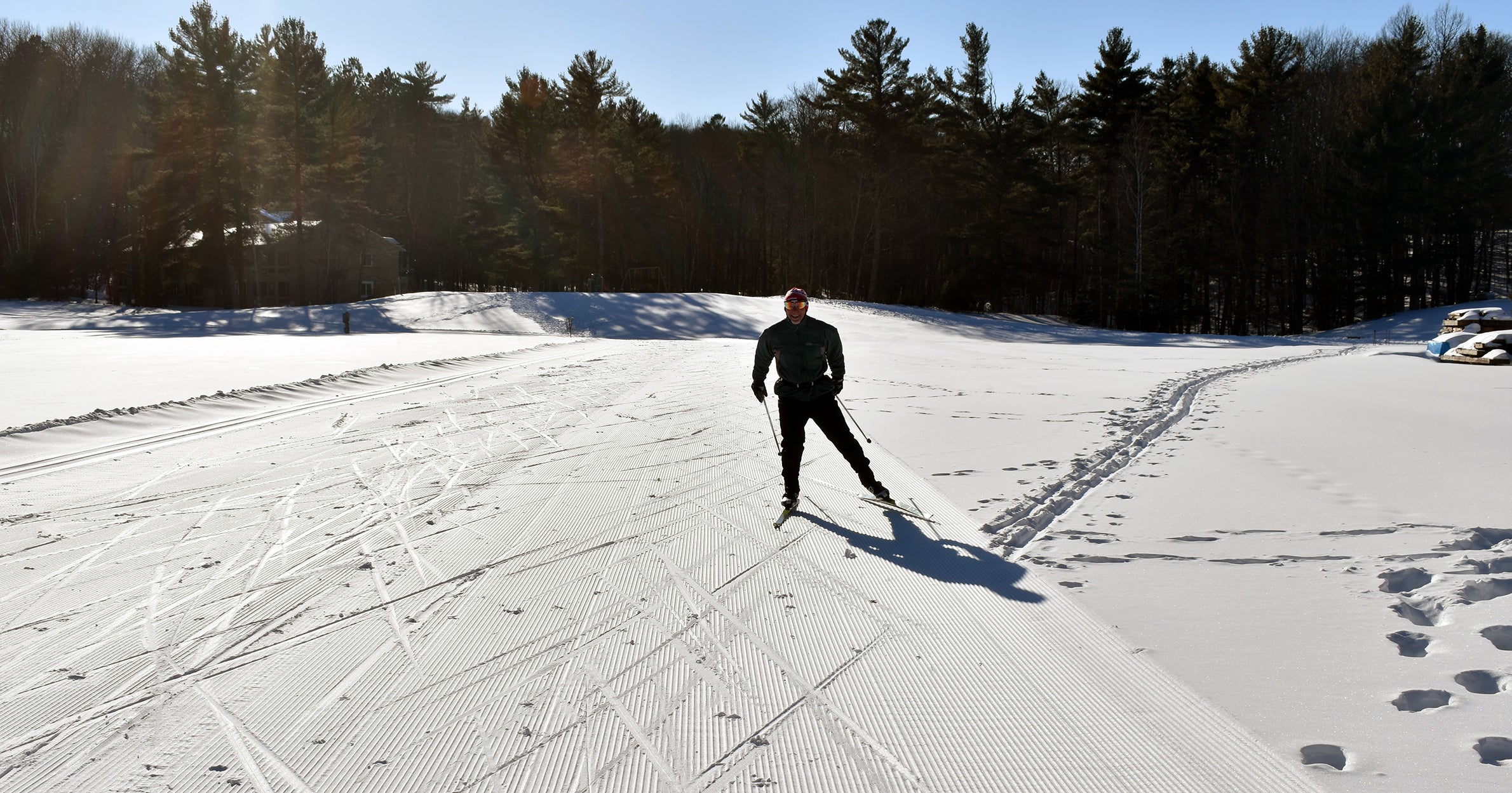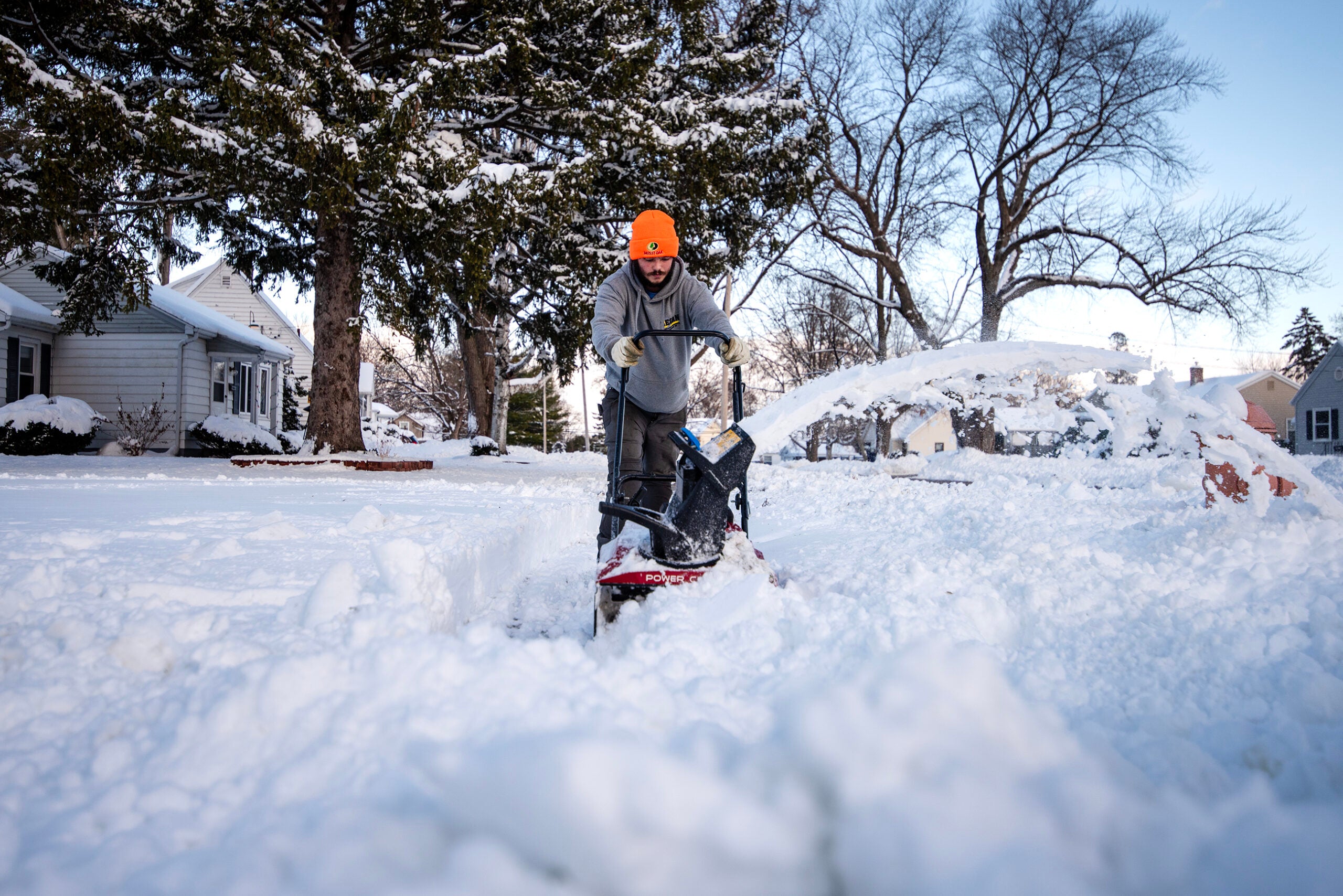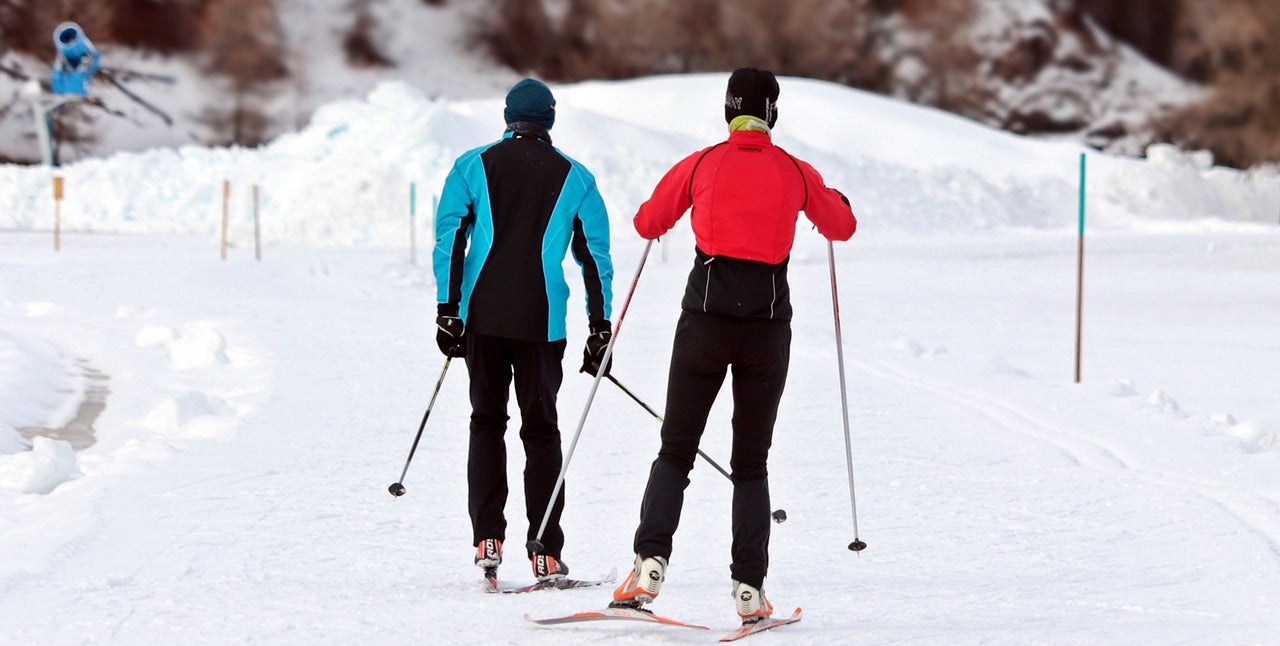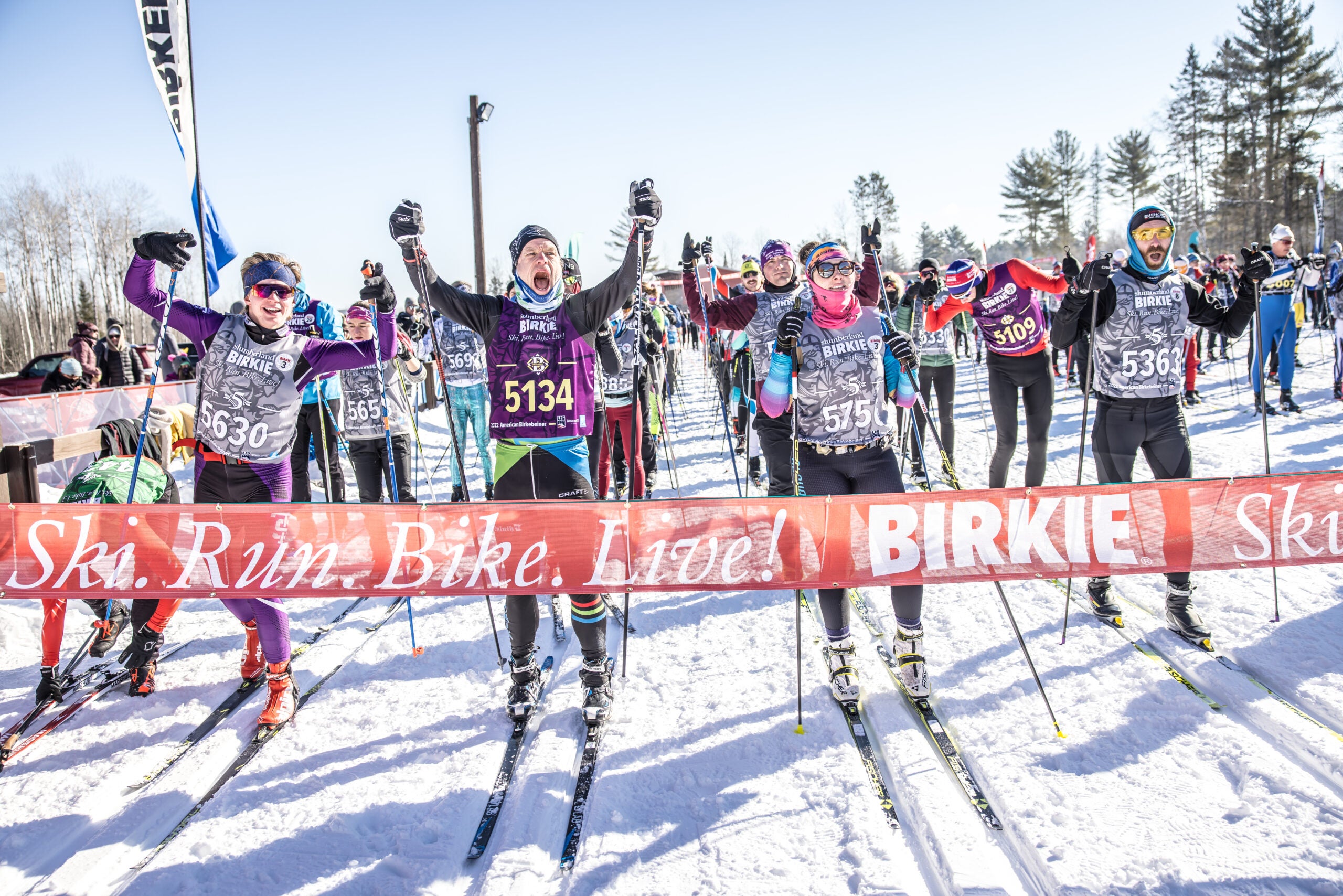At the trailhead for the American Birkebeiner Ski Race in northern Wisconsin, it almost looked like winter.
As the sun shone overhead on Feb. 24, blinding white snow blanketed the course, and the chill in the air was characteristic of the season.
Hundreds of skiers and spectators watched as some of the world’s best athletes prepared for the starting gun at the 50th anniversary of North America’s largest cross-country ski race.
News with a little more humanity
WPR’s “Wisconsin Today” newsletter keeps you connected to the state you love without feeling overwhelmed. No paywall. No agenda. No corporate filter.
But if it weren’t for artificially made snow, it’s likely the race would have never happened.
Next to the course, little snow marked the treeline. Wind swept dust from rutted dirt paths, and straw matted the ground where it wasn’t muddy.
Northern Wisconsin has faced a snow drought this winter, with anywhere from 20 to 60 inches less snow than normal since November. The dearth of snow has been devastating to the state’s winter tourism industry, as this winter is on track to become the warmest in 130 years. That has forced organizers of events like the Birkie, outdoor enthusiasts and business owners to adapt.
Despite the unusual conditions, spectators like 44-year-old Anne Nischke of Stevens Point cheered on elite Birkie skiers who were racing laps on a 10-kilometer (6.2-mile) loop of artificially made snow in Cable.
“Pretty amazing that we have no snow otherwise, and they were able to still pull off this race,” Nischke said.
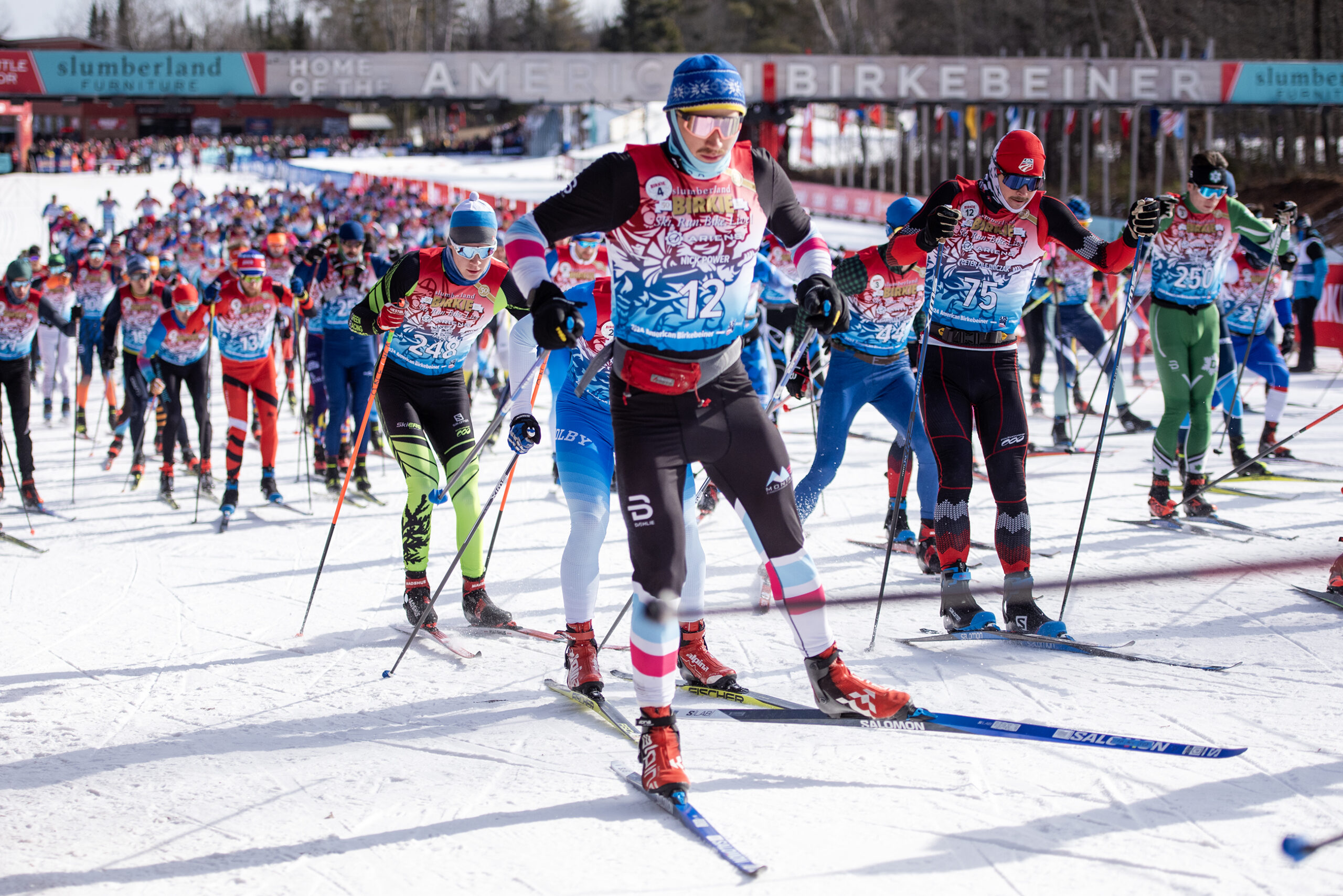
After weeks of stockpiling snow and eyeing the forecast, race organizers announced in early February the race would be held on a shorter course instead of running from Cable to downtown Hayward.
The American Birkebeiner Ski Foundation has been investing in snowmaking for a winter just like this since the race was canceled in 2017 for only the second time in its 50-year run.
December was the warmest ever recorded in Wisconsin, and January was 8.5 degrees warmer than normal, according to federal data. Snowfall in northern Wisconsin was less than half its usual levels, and strings of warm days meant most of it melted in most places. While final data for February is not yet available, state climatologist Steve Vavrus said the extremely warm winter is largely due to warming winds from El Niño and longer term warming trends from climate change.
“Winters have been warming more than any season in Wisconsin, and the northern part of the state has been warming more during winter than the southern part of the state,” Vavrus said. “In that sense, this winter is … basically an exclamation point on a long-term trend.”
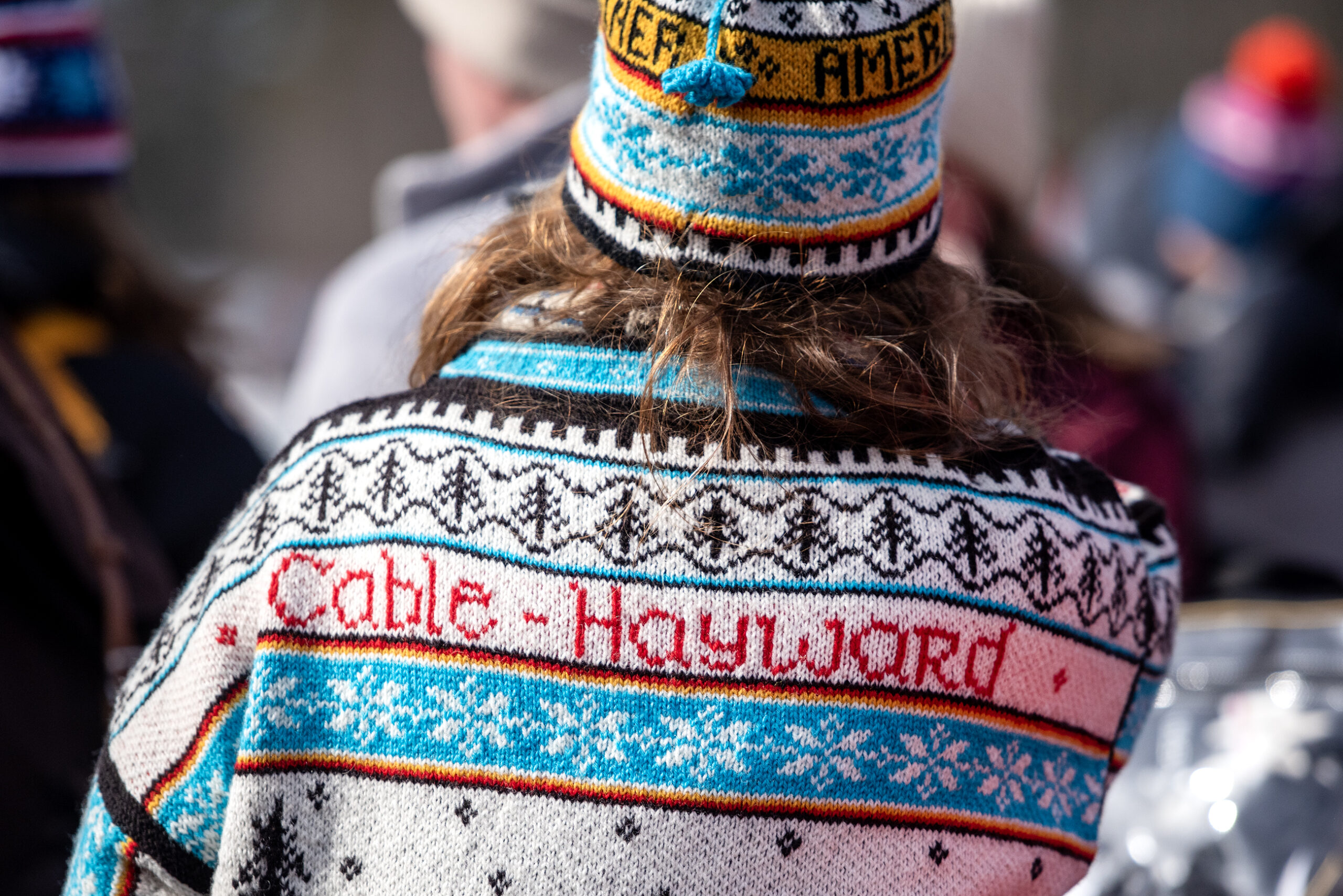
Skiers express sadness and make the most of a warmer winter
It was a harder race for Nischke this winter, who has been coming to the Birkie for nine years. She skied the Kortelopet, North America’s second-largest cross-country ski race. It was shortened from 29 to 20 kilometers this year. Due to the lack of snow, Nischke trained mostly by running. She didn’t ski more than 10 kilometers leading up to the race.
WPR spoke with around half a dozen skiers who shared similar stories of running or roller skiing — training on pavement with short skis equipped with wheels — due to the lack of snow.
That’s how Laura Johnson, 18, of Madison prepared for her first Birkie. She always wanted to ski the race because it’s a family tradition. She and her brother Jason, 22, skied a shortened 30-kilometer version of the race.
While she’s glad organizers weren’t forced to cancel the event, Johnson said the race wasn’t the same.
“Because it’s not the full thing, and I really enjoy going into Hayward and finishing up in the middle of the street,” Johnson said.
For Matt Horel, who attended for his 10th year, there’s nothing like racing into downtown Hayward for the first time. The 39-year-old, who grew up in Osseo and now lives in Minnesota, called that an emotional and amazing experience. This year, he said, he and his friend Rich Montana have skied almost exclusively on the artificially made snow. He called the warmer winter disheartening.
“I’m gonna have two little kids, so I want great winters for them to be able to ski,” Horel said.
Some skiers said the artificial snow made the course icy and difficult to navigate as the hills became more sugary with every lap. Others said it provided faster conditions for competing and praised organizers for pulling off the race, including 64-year-old Montana of Amery.
“Thank God there’s manmade snow,” Montana said.
Some argued the warmer winter is a wakeup call for venues to invest more in snowmaking. Others said they may travel even further north to find the real deal.
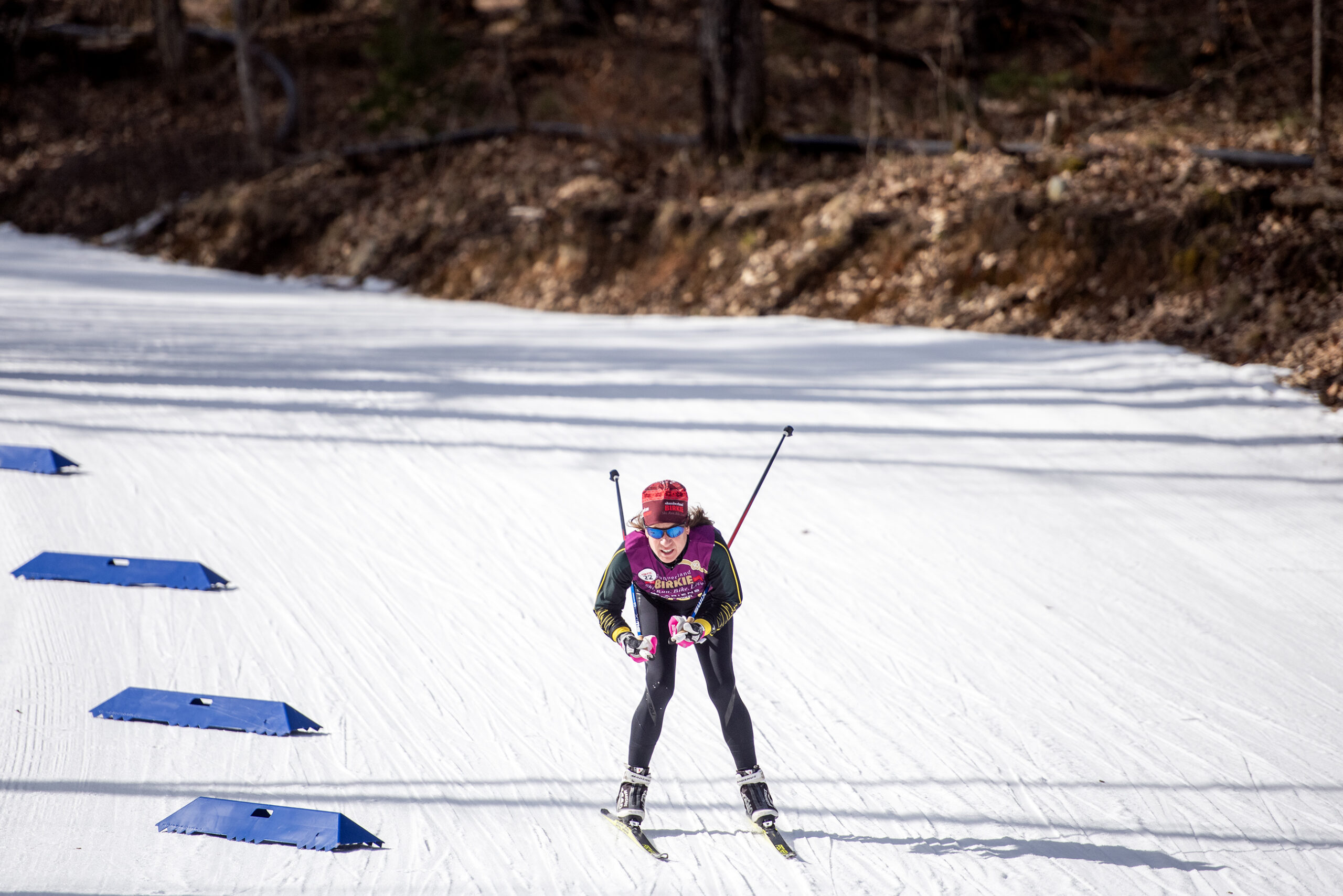
Lack of snow a blow for some businesses and winter tourism
While some still made the trek up north, Cindy Smith-Kaner said the lack of snow has kept others away. The co-owner of Riverbrook Bike and Ski in downtown Hayward said sales of skis this season have been almost nonexistent. She said many businesses are saying revenues are down 75 percent.
“We’re just looking ahead. I don’t want to dwell on that number,” Smith-Kaner said. “I think (the lack of snow) makes you be more conservative and diversified is all. If you’re not, I don’t know what you do.”
Her business has sold more clothing and accessories this year, she said, and it won’t have to order equipment for next winter. In the meantime, she and her husband Tim have not laid off employees because they can’t afford to go without them when business picks up again.
Other businesses have been forced to cut staff, according to Chris Ruckdaschel, executive director of the Hayward Area Chamber of Commerce. Hotels, lodges and restaurants have missed out on customers who usually come up to ski, snowmobile and ice fish. He said some businesses have reported losses from tens to hundreds of thousands of dollars, prompting the chamber to promote the use of ATVs and UTVs in place of the usual snowmobiling tourism.
“It’s helped a lot,” he said. “It just hasn’t completely replaced what otherwise would have been.”
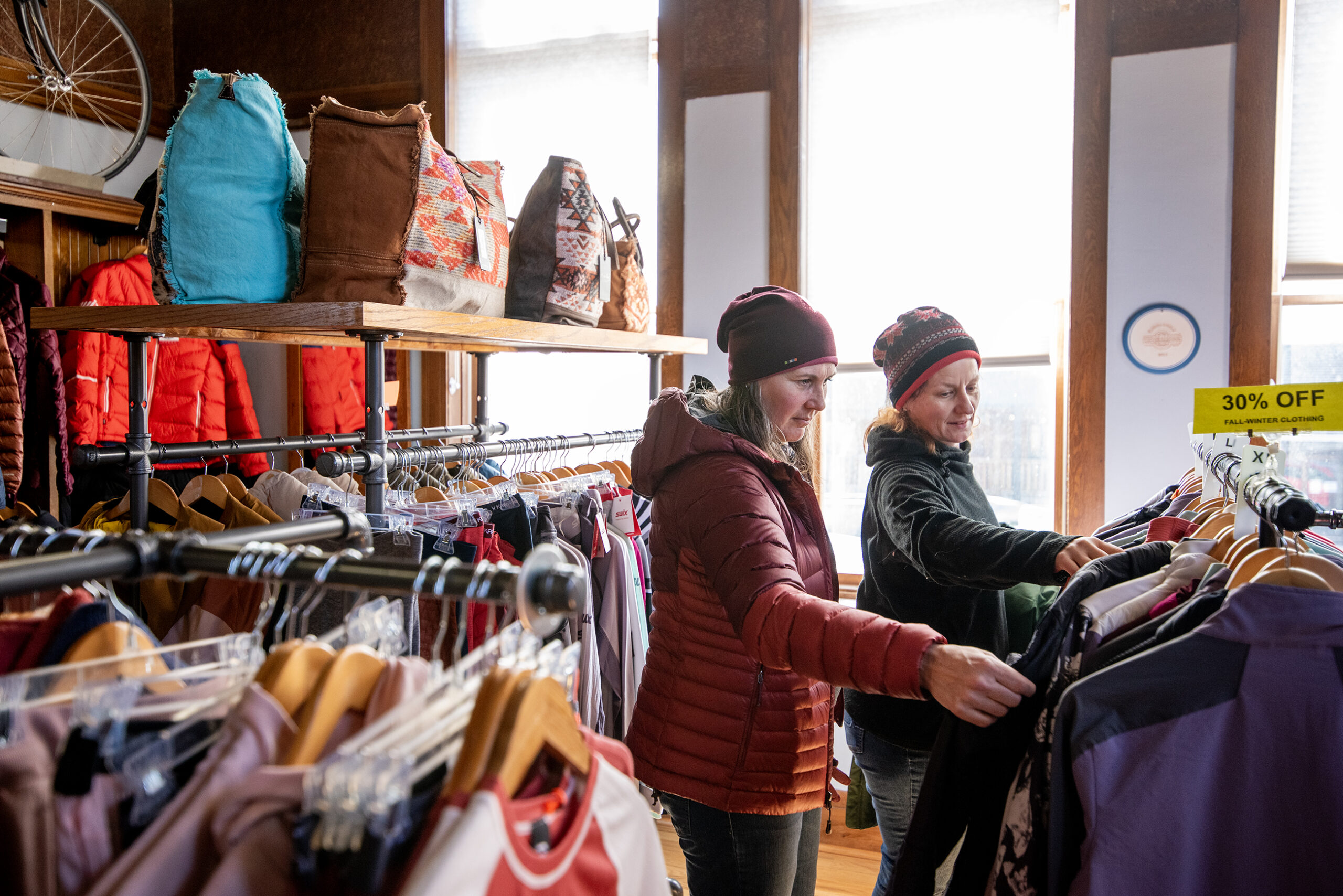
Elsewhere in Wisconsin, the unseasonably warm winter put a damper on this year’s sturgeon spearing season on the Winnebago System as unsafe ice conditions kept anglers close to shore. In Lake Geneva, the popular ice castle attraction now known as Winter Realms started late and closed early amid warmer weather. And more than a dozen economic development and tourism organizations from a seven-county area asked the state for help to offset millions in lost revenues.
Now, businesses may be eligible for federal disaster relief in the form of low-interest loans. Ruckdaschel said that should help generate some much-needed cash flow.
Besides that, he said the Birkie has been considered the region’s Northwoods Superbowl, typically contributing a roughly $20 million economic impact. Participation was down but only a little this year, and post-race figures showed 12,000 skiers attended compared to the 13,000 skiers who were anticipated to take part in the 50th annual race.
Alison Springer, co-owner of Outdoor Ventures in downtown Hayward, said the business saw an uptick in traffic during Birkie week. Otherwise, the store that sells outdoor wear has been quiet during a season that accounts for a substantial share of their business.
“That’s what keeps our doors open, basically, once the summer vacation season ends,” Springer said.
However, not all businesses say the warm winter is hurting their bottom line. Just across the street, Caroline Gerdes with 3 Fly Sisters Taps & Wines said she and her husband have seen double the business from the same time last year when they first opened their doors.
“Despite the no snow, we’ve been extremely busy — I think because we’re not dependent on that snowmobile traffic,” Gerdes said. “And we’re right in town. Everyone’s shopping and doing fun stuff.”
She said some people have been more willing to get out of their homes with the warmer weather. Despite that, she thinks they wouldn’t have made as much money without the Birkie, which is a shot in the arm during winter months.
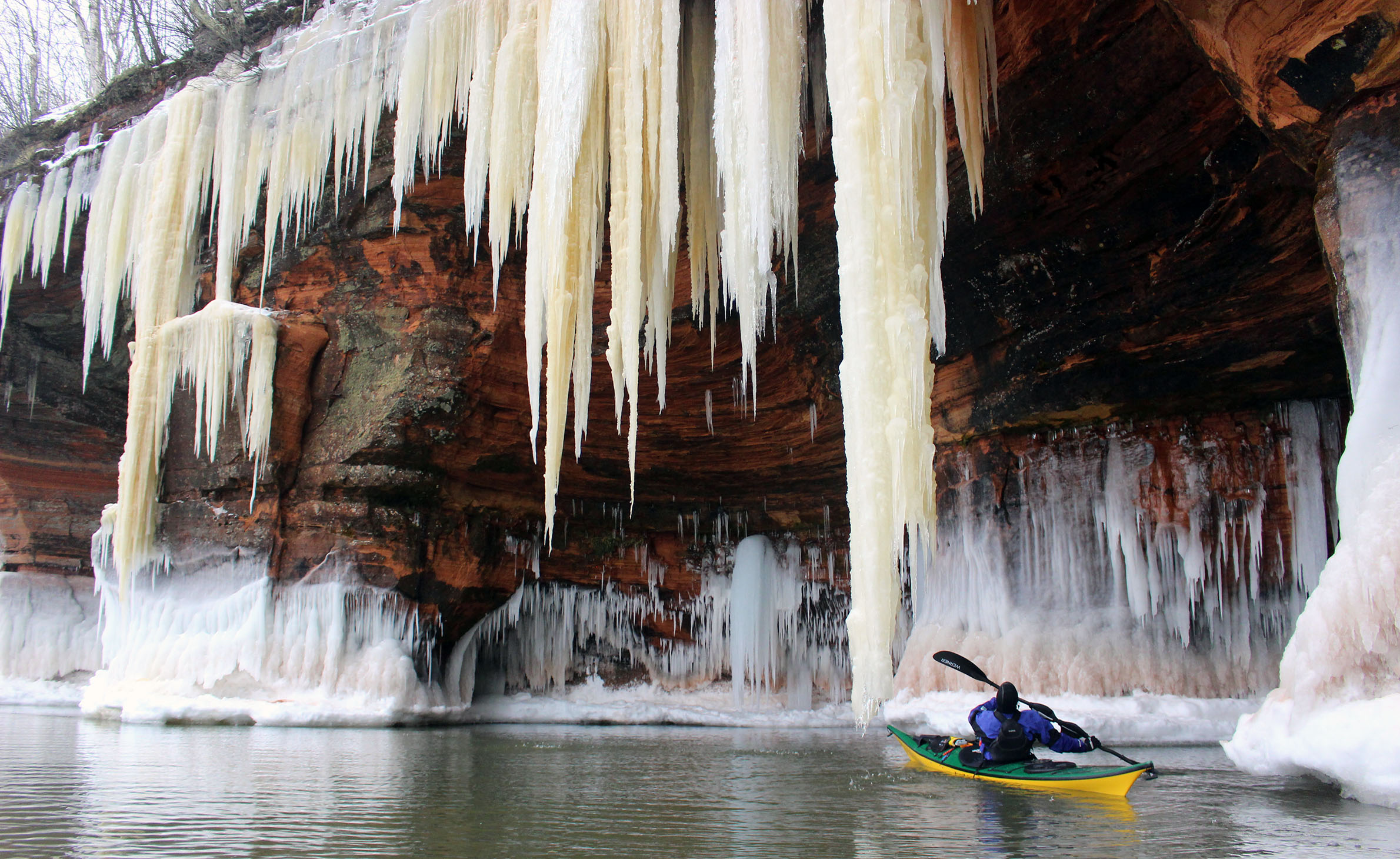
Warmer winter also means no ice caves in the Apostle Islands
Without extreme cold, the regional economy of Bayfield along Lake Superior’s south shore loses out on a potential boost from the ice caves within the Apostle Islands National Lakeshore.
A decade ago, the ice caves created an estimated $10 to $12 million economic boon when photos of ice formations on sandstone cliffs near Meyers Beach went viral on social media. The Apostle Islands drew in more than 290,000 visitors in 2014, of which more than half descended on the park during the first three months.
It’s been nine years since the ice was safe enough to allow access to the caves on foot.
But that hasn’t stopped experienced kayakers like Neal Schroeter, who lives in Washburn. Schroeter co-founded Whitecap Kayak, which offers guided sea kayak trips.
When the winds are favorable, ice and slush near the shore will blow out into the lake. On one foggy, calm day, Schroeter set out with a group of expert kayakers for a winter paddle to view massive icicles on the cliffs.
“Big chunks of ice go some 30-feet long,” Schroeter said. “Then, little tiny icicles inside the caves and on things and from the water splashing up against it. It was just a real, beautiful, surreal kind of experience.”
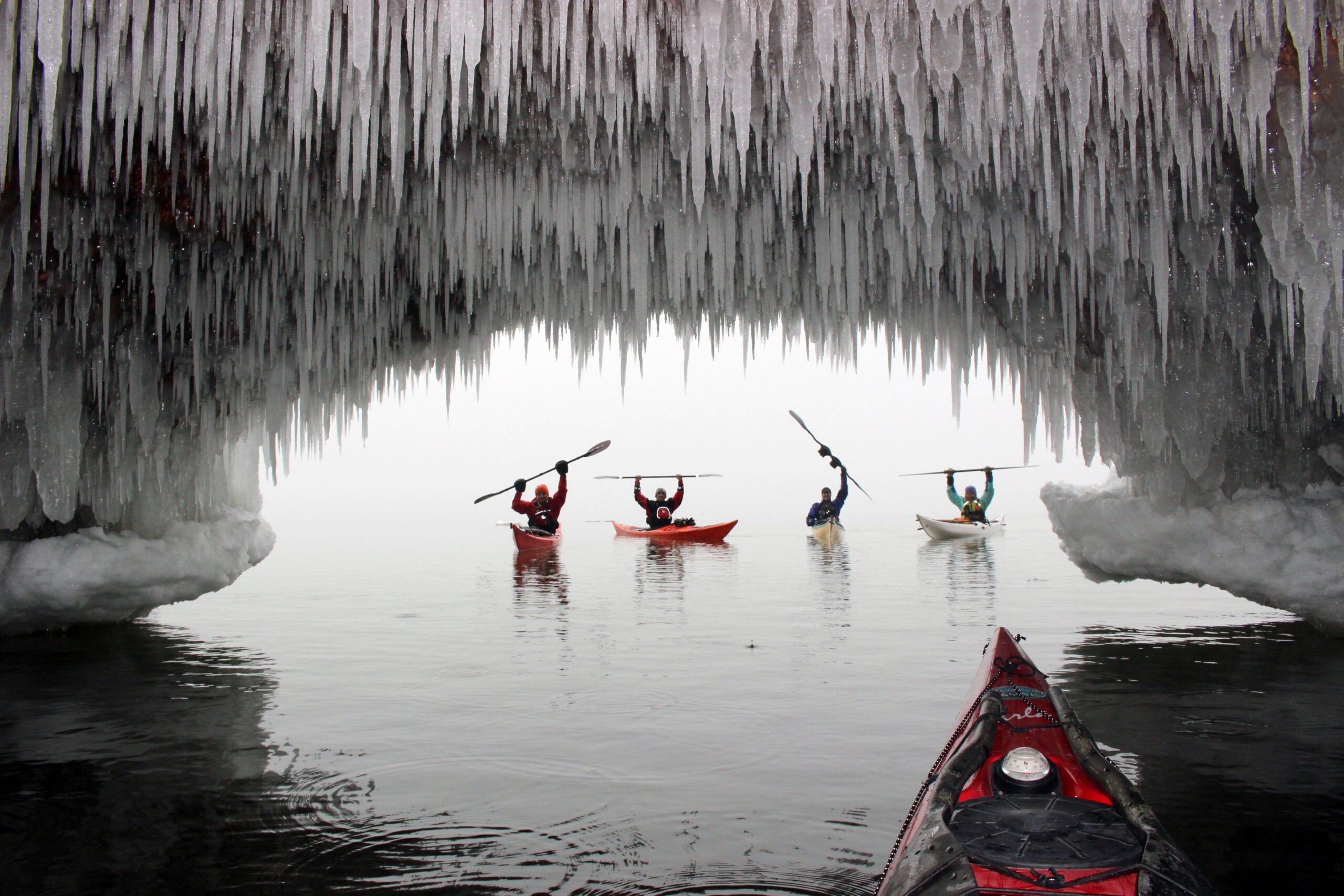
Schroeter, who’s been kayaking for 40 years, cautioned that kayaking in winter is dangerous. He said he wouldn’t take beginners or even kayakers of intermediate skill level out on the water, and noted the group must keep a close eye on the forecast and be conscious that ice could blow in at any time.
They also take a long list of precautions from wearing a drysuit and life jacket to bringing a cellphone, marine radio or personal locator beacon that can send a signal to rescue agencies. An emergency room physician, Schroeter warned people could die within seconds if they fall in the icy waters.
Even so, he tries to get out once or twice when there’s open water and temperatures rise to 40 degrees or warmer. And while people can’t walk on ice, Schroeter said they could hike a nearby trail to get a bird’s eye view of the ice caves.
As an avid skier, he has mixed feelings about the extremely warm winter.
“Those of us who like winter — whether it’s skiing, snowshoeing or snowmobiling — it’s been kind of a bummer,” Schroeter said. “But you have to adapt. Go running. Go kayaking. Do other things.”
Wisconsin Public Radio, © Copyright 2026, Board of Regents of the University of Wisconsin System and Wisconsin Educational Communications Board.
